Female Scientists Report a Horrifying Culture of Sexual Assault
Research labs and field sites are swarming with men who sexually harass and assault their colleagues. But when women come forward, the perpetrators aren’t punished—the victims are.


Let me tell you about my trouble with girls. Three things happen when they’re in the lab: You fall in love with them, they fall in love with you, and when you criticize them, they cry.” That’s what British biochemist and Nobel Laureate Tim Hunt told an audience at the World Conference of Science Journalists just two years ago.
Following intense social media backlash, Hunt claimed his remark “was intended as a light-hearted ironic comment.” His defenders said the line was taken out of context, pointing to his praise of female scientists in the same speech (“science needs more women, and you should do science, despite all the obstacles”). Bad joke or not, it cost Hunt his faculty position at University College London—and pointed to an insidious problem in the world of scientific research that had persisted far too long already.

From her office at the University of Illinois at Urbana-Champaign, Kate Clancy, Ph.D., watched the reaction to Hunt’s comments unfold on Twitter, thinking, Same shit, another day. The 38-year-old associate professor was recalling a string of recent high-profile incidents that have made her and other women in science feel excluded, unwelcome, and like the very nature of being a woman in science “is in some way problematic,” as she puts it. There was the peer reviewer for a scientific journal who suggested that two female researchers find “one or two male biologists” to co-author and strengthen their paper. And the column published on Science magazine’s website in which a biology professor told a postdoc who asked how to handle her adviser, who frequently tried to look down her shirt, to “put up with it, with good humor if you can.”
In October 2015, Buzzfeed reported that University of California, Berkeley’s Geoff Marcy, a noted astronomy professor, got away with sexually harassing students for at least a decade—despite complaints being filed against him at two different universities. (Marcy denied the allegations generally, but he apologized and has since resigned.) In January 2016, Democratic Congresswoman Jackie Speier aired on the House floor a 2004 investigation into renowned astronomy professor Timothy Slater by his former employer, the University of Arizona, in which Slater was revealed to have gifted a student a vibrator, told a female employee she’d “teach better if she did not wear underwear,” hosted meetings at strip clubs, and asked graduate students for sex. (Slater denies all allegations and is suing Arizona for releasing the confidential report.) A month later, Science magazine reported that paleoanthropologist Brian Richmond, curator of human origins at the American Museum of Natural History in New York City, was under investigation for sexually assaulting a research assistant. (Richmond said that the encounter in question was “consensual and reciprocal”; following multiple investigations by the museum, Richmond resigned last year.) Similar cases of harassment by science professors have also been reported at the California Institute of Technology, University of Chicago, the University of Rochester, and Boston University.
Each time one of these incidents comes to light, and each time women in science take to social media to express empathy and anger, commenters swarm to tell them to get over it or learn how to take a joke—as if putting up with sexism, harassment, and assault is the expected price of being a female scientist. But Clancy knows it’s never just a joke, or a few bad apples, or one misguided university—and she has the data to prove it.

In July 2014, Clancy and her co-authors Robin Nelson, Ph.D., Julienne Rutherford, Ph.D., and Katie Hinde, Ph.D., published the results of a survey that gauged the climate for women and men on field sites, where students and faculty at all levels across many scientific disciplines perform research. Of the 666 scientists from 32 different disciplines who completed the survey, 64 percent said they had personally experienced sexual harassment in the field and 20 percent reported having been sexually assaulted. Women were 3.5 times more likely to have experienced harassment or abuse than men, and were primarily harassed and assaulted by superiors (whereas male students were more likely to be victimized by peers). The report sent shockwaves through the scientific community. “There was a lot of outrage,” says Heather Metcalf, director of research and analysis at the Association for Women in Science. “A lot of, How is this still happening? After all this time and all of these efforts to change the culture, how can this still be so prevalent?” And worse: How many would-be female scientists are we losing as a result?
64% of scientists have been sexually harassed in the field and 20% report having been sexually assaulted.
But Clancy and her coauthors knew that if they were truly going to impact the culture of their industry, quantitative research alone wouldn’t be enough. The four are back this month with a follow-up study in the American Anthropologist journal detailing just how and why such widespread abuse has persisted. They conducted in-depth interviews with 26 of the original survey respondents and identified patterns and themes: On field sites with clear codes of conduct and supervisors who enforced the rules, women thrived, but on the sites where rules did not exist or were ambiguous and there were no consequences for wrongdoers, they found instances of unwanted flirtation or physical contact and intimidation, verbal sexual advances, sexist jokes and comments about physical appearance, forced kissing, attempted rape, and rape. One respondent said field site leaders insisted on conducting conversations while naked. Another said the head of her field site “would systematically prey on women” to the point that some women in her group chose to sleep on the floor in the same room rather than their own beds: “I had to serve as a kind of bodyguard.”
Stay In The Know
Get exclusive access to fashion and beauty trends, hot-off-the-press celebrity news, and more.

Confronting offenders did not deter the perpetrators’ behavior. Quite the opposite: Women were only rewarded (i.e. given the best research assignments) if they consented to harassment or sexual advances. “It became clear that I was going to have to play along a little bit,” another respondent said of her harasser. “I had a professional connection with this person, but he expected me to become his next mistress.” Many female scientists said the behavior continued even after they left the field sites and that the psychological trauma compromised their ability to revisit, analyze, and publish their data. Several of the women were able to pinpoint exactly how their abuse led to their career stalling. Five of the women said they had to leave the sciences altogether.
When she was a Ph.D. student studying paleoanthropology, Jennifer (not her real name) got the opportunity of a lifetime: She was invited to spend a month at a field site in Eurasia where she’d have the chance to study fossils crucial to the understanding of human evolution. One night, she and the other scientists shook off a long day of excavation at a house on-site—drinking, dancing, singing, listening to music. Jennifer was sitting next to the male principal investigator (or P.I., as they’re commonly called) who ran the site.
At some point, the lights went off. Almost as if on cue, the P.I. grabbed her and shoved his tongue in her mouth. “I don't want to say he French kissed me because that’s something two people do together,” Jennifer says. “I felt filled up.” She pushed him away, but was sure everyone in the room had witnessed the encounter. Embarrassed, she feigned tiredness and scurried to bed.
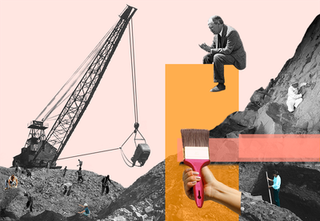
For the next few weeks, the P.I. regularly grabbed her hand under the lunch table before she could swat him away. “I would just kind of politely laugh it off,” she says. “I was out of my country, I didn't speak the language, and he was the head of my project. I hardly knew him at all—I only knew him as the person in charge of all my hopes and dreams.”
The head of her field site “would systematically prey on women” to the point that some of them chose to sleep on the floor in the same room rather than their own beds.
Those dreams effectively ended the night of the incident. Before that, Jennifer had planned to return to the site often, for as long as six months at a time, to conduct paleoanthropological research. But that P.I. was the gatekeeper of the site, and going back would have meant enduring further harassment and assault—he’d emailed her when she got home, saying how much he missed her and couldn't wait until she returned. “I knew it was over,” she says. “I couldn't work with those fossils at all anymore—that’s six million years of human evolution. Those fossils are why I went to grad school.”
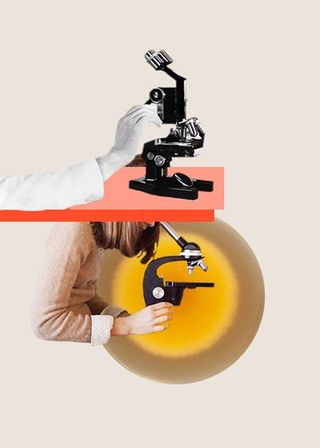
Jennifer was one of the lucky ones. She had to pivot her area of focus after four years of graduate school, which delayed her Ph.D., but she was able to continue her research using fossils in Kenya at a site free of harassment. Today, she’s an associate professor of anthropology at a university in New England, but she’s never stopped thinking of other women who may not have been as fortunate. “It gnaws away at me,” she says. “I worry that it’s happened to other women; I wonder how many of them just gave up.”
It’s stories like Jennifer’s that made Clancy dig deep into the darkest corners of her field. Back in 2011, she was blogging for Scientific American and was often invited to speak at universities about “how to be a woman in science.” At one such event, she ran into an old colleague. The friend used to be about two years behind Clancy in her career, but when they reconnected, the woman had yet to finish her Ph.D., while Clancy was well into a tenure-track job. Clancy asked what was holding her up. “Every time I look at my dissertation data it reminds me of when I was sexually assaulted in the field,” the woman replied. A few weeks later, Clancy had a remarkably similar conversation with another woman at a different conference. “I was like, ‘What’s going on with you?’” Clancy recounts. “And she was like, ‘Let me tell you about the systemic sexual harassment at the field site that made me completely desert this line of research.’”
The women agreed to write about their experiences anonymously on Clancy’s blog. When the posts were published, the comments and emails from women who had also experienced gender discrimination and harassment on field sites—everything from always being the person designated to do the dishes to being raped by their P.I.s—came rolling in. Clancy wondered just how many female scientists’ careers had been stymied by sexism and assault.
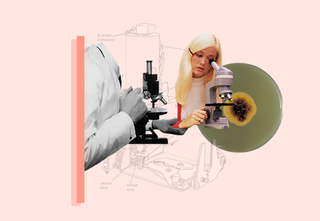
She asked Nelson, Rutherford, and Hinde if they would be willing to study the disturbing trend with her. The women agreed, but worried that doing such work as junior faculty was risky for their own careers. They considered waiting to conduct the survey until they had all secured tenure, but decided they couldn’t “in good conscience” wait. “If there is a penalty for trying to make things better and safer, then why would I want to be in this field?” explains Hinde, an associate professor of human evolution at Arizona State University, of her rationale. “Of course I was scared, but this is too important.”
It was really graphic and gross—he suggested not using a condom so I could feel the ridge of the head of his penis.
Clancy presented the initial results at the April 2013 meeting of the American Association of Physical Anthropologists. “I was terrified to stand up in front of a bunch of my colleagues and basically say, ‘A hefty portion of you are harassing and assaulting your students and your peers. We’re watching you now and we’re not going to let you pull that shit anymore.’”
The reason those men were able to get away with for so long? So few women were sounding alarms. According to the research, called Survey of Academic Field Experiences (SAFE)—eventually published in PLoS ONE after being rejected twice, which the women suspect was on account of the subject matter—only 13 percent of female survey respondents said they reported the harassment, and just 7 percent of women who were sexually assaulted formally came forward.

That’s likely because budding female scientists have an extreme disincentive to report—doing so often means speaking out against the very people who write their letters of recommendation and fund their work. The perpetrators “are the people who have control over our careers,” says Nelson, an assistant professor of anthropology at Santa Clara University. “There’s no way for me to overstate how devastating reporting harassment or assault could be. These people are so powerful, and so the idea of bringing charges…I mean, why? You would sabotage your whole career.”
A majority of the dozen victims interviewed by MarieClaire.com for this story—most of whom did not want their names published for fear of retribution—said that when they reported, the perpetrators were rarely punished. They often felt as though the person who victimized them was untouchable. Not only did their perpetrators have tenure (meaning they can only be fired for “extraordinary circumstances”), but their work brought the university millions of grant dollars and immeasurable prestige. “We have to stop privileging the science above the people who are doing it,” Hinde says.
One woman, a biology undergraduate student at a small Midwestern college, told MarieClaire.com that one of her professors grabbed her breast three times while they were reviewing an exam in his office. She reported the incident to the administration, but the professor wasn’t punished—only her reputation suffered. “I’m no longer the smart girl who likes plants and trees,” she says. “I’m the girl who got groped and made trouble for her teacher.” When one 27-year-old planetary scientist reported being harassed and stalked by a visiting scholar at the observatory where she worked, the head of the department told her to “grin and bear it,” she recalls. “He said, ‘You wouldn’t want to complain about him because it could ruin his career.’” No such concern was expressed for her own.
It gnaws away at me.
The toll sexism takes on a woman’s career in the sciences isn’t always so overt. Studies have shown there are many subtle ways women are hindered: Female scientists receive less mentoring, are given fewer awards, are invited to speak at fewer conferences, and receive significantly less funding for their research. They are also less likely to be hired—in 2012, a Yale University researcher sent otherwise identical applications to faculty for lab manager jobs and found “John” was more likely to be given the position and receive a higher starting salary than “Jennifer.” Research has also shown that male professors see female students as less competent and are significantly less likely than female faculty to bring women trainees into their labs. “You can tell women, ‘Lean in, fight for yourself, fight for a raise, work hard, put in extra hours,’” Clancy says, “but at the end of the day, these are the kinds of things that are actually going to hold us back.”
In 2009, a woman we’ll call Sarah was working as a research assistant in a lab where she was studying for a Ph.D. in neuroscience. One night, she was driving back to campus from a work event with the married head of her lab when, out of nowhere, he started talking about having sex with her. “It was really graphic and gross—he suggested not using a condom so I could feel the ridge of the head of his penis,” she recalls. “I was like, ‘Um, I’m just going to drop you off at your car.’” She hoped that would be the end of it.
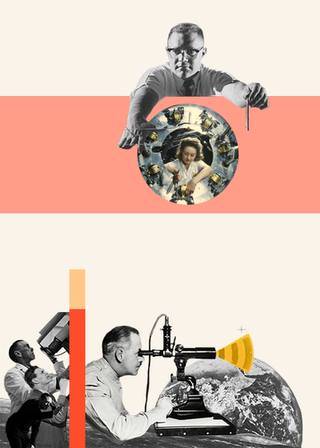
Sarah decided she would go to work the next day and act as though nothing had happened. When she was getting ready, her boss called. He asked her not to mention to anyone what had occurred. Then he said, “Don’t worry about coming in—you can take the day off.” So she stayed home. From then on, any time she did go to work, her boss was “just so awkward” and kept telling her not to come in. “I felt unwelcome, which is weird because he should be the unwelcome one,” Sarah says. “But it was his lab.”
She went from working 20 hours each week to putting in five hours or less. Soon, “it was like, ‘Well, we started this project, but you are not a part of it. We are writing up this paper, but we didn't put you on it because you haven’t been here,’” Sarah remembers. By the end of her time there she’d only been listed as an author on four papers, while her male counterpart had been cited on 20.
Over time, it became clear that she wasn’t going to get the job she'd wanted since first grade. “It was a sad, sad moment,” she says. “I had been investing so much of myself for so long, and then to have to say, ‘Well, that was all down the drain….’” Today, Sarah works at a pharmaceutical company as a liaison to doctors. “I don’t do research—I just talk about other people’s research,” she says. “I do enjoy it, but it’s not what I dreamed of. I’m no longer a scientist.”
Budding female scientists have an extreme disincentive to report—doing so often means speaking out against the very people who write their letters of recommendation and fund their work.
We may never know just how many potential female scientists like Sarah we’re losing. But we do know this: Between 2014 and 2015, women obtained 59 percent of bachelor’s degrees in the biological sciences and 38.5 percent of bachelor’s degrees in the physical sciences. (Tell that to anyone who claims women just aren’t interested in science.) But while women graduate in equal numbers, they don’t make it to the highest ranks in equal numbers. Only 21 percent of professors across the sciences are female. According to the Census, male science and engineering graduates are employed at twice the rate women are.
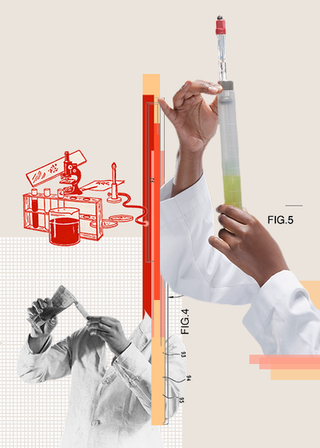
But for all the downsides, the good news is that, thanks to Clancy and her colleagues, these issues are finally being discussed and reform is on the way. It’s too soon to say what measures may come from their follow-up study, but already a number of disciplines—including archeology, astronomy, physics, and ecology—have conducted or are planning similar surveys specific to their research sites. Most are finding comparably high levels of misconduct. In response, organizations that fund research, like NASA and the National Science Foundation, have made public statements that they will not tolerate harassment at grantee institutions and programs. The American Association of Physical Anthropologists drafted a new code of ethics. A group of professors at universities nationwide is working to develop sexual harassment bystander intervention training for the earth, space, and environmental sciences.
Change may also come at the legislative level. Representative Speier has introduced a bill requiring schools to share information about disciplinary proceedings so that when perpetrators move colleges, their indiscretions follow them. “It’s a thrill to feel like we are really making a difference,” says Rutherford, an associate professor in the department of women, children, and family health science at the University of Illinois at Chicago. “I hear from people who say, ‘I can now have this conversation with the people who are in a position to change things, and they have to respect it because it’s on paper in black and white.’” Hinde adds that she’s heard from colleagues who have implemented sexual harassment policies at their field sites and has had “men email me and tell me they had marginalized someone in the past and they aren’t going to do it anymore.”
That’s key, Rutherford says, because if the culture doesn’t change, we’ll never know what might happen if female scientists are allowed to reach their full potential. “What if women didn’t have to be so vigilant all the time? What if you didn't have to smile, have a thick skin, keep it to yourself, look over your shoulder, or be careful about who’s in the lab at the end of the night,” she posits. “How much more could women achieve?”
Kayla Webley Adler is the Deputy Editor of ELLE magazine. She edits cover stories, profiles, and narrative features on politics, culture, crime, and social trends. Previously, she worked as the Features Director at Marie Claire magazine and as a Staff Writer at TIME magazine.
-
 Netflix Is Adapting One of #BookTok's Favorite Romances—Here's What We Know About Ana Huang's 'Twisted Love' TV Series
Netflix Is Adapting One of #BookTok's Favorite Romances—Here's What We Know About Ana Huang's 'Twisted Love' TV SeriesCould this be the next 'Bridgerton' or 'Tell Me Lies?'
By Quinci LeGardye Published
-
 'American Primeval' Is Bound to Be Your First Netflix Obsession of 2025—Here's What to Know About the Cast
'American Primeval' Is Bound to Be Your First Netflix Obsession of 2025—Here's What to Know About the CastTaylor Kitsch and Betty Gilpin led the gritty miniseries about a family's trek across the American West in 1857.
By Radhika Menon Published
-
 Katie Holmes Taps Every Fashion Editor's Favorite Unexpected Color Combo
Katie Holmes Taps Every Fashion Editor's Favorite Unexpected Color ComboTry this insider styling trick ASAP.
By Kelsey Stiegman Published
-
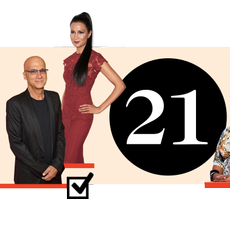 In the Wake of the #MeToo Movement, What Are the New Rules?
In the Wake of the #MeToo Movement, What Are the New Rules?Prominent thought leaders and pop culture favorites share their thoughts on how to be a decent human and what we need to do to move forward.
By Marie Claire Published
-
How to Beat the Boys Club
Though women comprise roughly half the workforce, they're still woefully underrepresented in engineering and technical trades. So what does a gal competing in a testosterone-choked office need to know to compete?
By Marie Claire Published